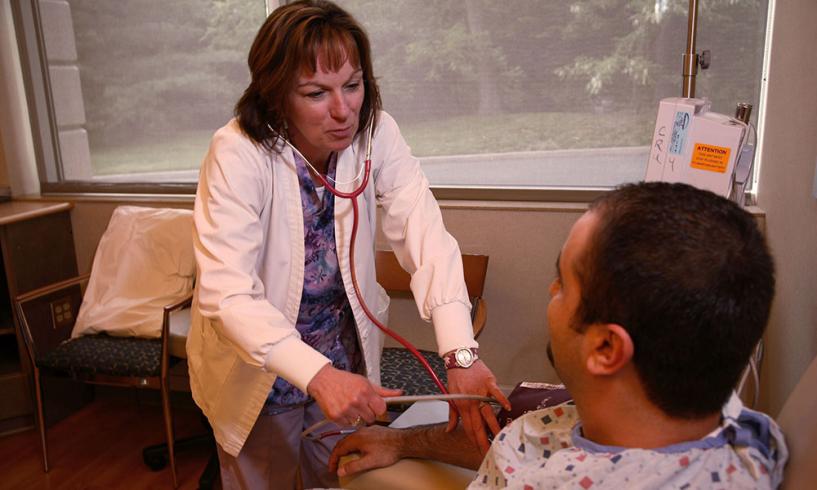Although the approach may be different, academic institutions and community-based centers have the same goal: improving the lives of people with cancer. So what happens when academia meets community in a joint effort to promote this important purpose? ONS member and researcher Frances Lee-Lin, PhD, RN, OCN®, CNS, associate professor at Oregon Health and Science University (OHSU) School of Nursing in Portland, has first-hand experience.
Moving From Clinical Practice to Research
Lee-Lin says that her interest in academia began in 2000 when she moved to Oregon and began teaching at OHSU. She recalls, “I trained as an oncology clinical nurse specialist and worked primarily in the acute care setting. It never occurred to me that I would eventually pursue a PhD.” But after teaching for two years at OHSU, she enrolled in the University of Utah PhD program.
Lee-Lin says she considered focusing her research toward nursing outcomes in acute care but was redirected after watching a program about Asian Americans. “I don’t remember the details but I was in tears as I recognized the special needs of this population of people,” she explains. Since that time, Lee-Lin has focused her research on the Asian American population, primarily in the area of cancer prevention and screening.
In 2010, Lee-Lin and her colleagues received a Susan G. Komen-funded grant to address mammography screening in rural areas, develop evidence-based interventions to increase screening adherence, and create sharable materials and best practices. The initial project involved structured collaboration between OHSU and two rural communities.
Benefits and Challenges of Academic-Community Research
“Location and distance are major barriers,” she says. “Each community site visit involved four to six hours of travel time added to six hours in collaboration.”
But the benefits outweigh the challenges. “Community partners benefited from the research team’s astuteness to baseline data and measuring evaluation outcomes,” Lee-Lin says. “We were also able to show evidence that multicomponent interventions were superior to using a single intervention.”
When the research team suggested sending out letters to remind women to schedule their mammograms, it was the community leaders’ turn to advise academia. “Because the community leaders understood their community needs and local resources, they suggested that women may not open letters that looked like a hospital bill or other correspondence,” Lee-Lin recalls.
They decided to print the letter on pink paper and send out in a pink floral envelope. “This never would have occurred to me,” she says. “That was just one example of how the academic team was enlightened by the local knowledge and wisdom of our community partners.”
Ongoing and Current Research
Other academic centers are also finding the reciprocal benefits of community partnerships. Meade, Menard, Luque, Martinez-Tyson, and Gwede described their successful partnering with multiple community entities such as health centers, faith-based organizations, and local media to reduce cancer-related health disparities and expand research efforts and health promotion.
Since 2006, the National Institute of Health (NIH) has focused on community-based participatory research. Two significant benefits of CBPR reported in an NIH-funded study (Simonds, Wallerstein, Duran, & Villegas, 2013) are adapting evidence-based interventions to each community and alleviating mistrust between community and academia.
Lee-Lin’s enthusiasm for research is contagious. She shares her passion with nursing students and encourages them to take part in research by finding something that interests them. Her advice to other professionals: “Each collaborative party must make realistic goals for the project and recognize what unique talents each member of the team brings to the relationship.”






